Home-my-Home |
- Восточные каботажные судн сохраняют большой на кондиционировании воздуха лета
- Windows и раздвижные двери очищая подсказки
- Кондиционер воздуха не работая? Попробуйте эти подсказки первое
- John Deere соединяет Landscaping художников в фактически общине Lawnscape
- От послевоенного для того чтобы охладить современное прожитие!
- Поднятый DIY сад кровати: Вырастите ваши!
- Нагрюющ, охлаждающ, и домашний выход по энергии конструкции
| Восточные каботажные судн сохраняют большой на кондиционировании воздуха лета Posted: 03 Jun 2011 03:03 PM PDT
We see it every year. With the summer heat comes a surge of interest in HVAC upgrades along the East Coast, especially air conditioning installations. In fact, our contractors report greater interest in energy-efficient air conditioners than ever, as more homeowners try to save money where they can. So, to help you in your quest for the most cost-effective upgrades, we’ve broken down city rebates and savings on air conditioning installations in Baltimore, Washington, D.C., Philadelphia, Chicago, Boston and New York. If you have any questions, just let us know in the comments below. To cut right to the chase and get price quotes on air conditioning, click here. Baltimore |
| Windows и раздвижные двери очищая подсказки Posted: 03 Jun 2011 12:00 PM PDT
Washing your windows without the streaksThere is nothing worse than cleaning windows and screens, only to see streaks on them when you’re done. But, there are ways to keep this from happening, as well using products on the market to make your life in this area much easier. Take a look at the following suggestions to help your cleaning efforts this spring.
Once the screens are completely dry, reinstall them onto their originating window. It is important to make sure they are totally dry or they may splatter moisture onto your newly cleaned window during installation. Enjoy The ViewOnce you have finished this task, take the time to enjoy the view outside. You will also notice that when you open your windows to get some fresh air, that the air will smell nice and fresh coming through your newly cleaned screens. This is because all the old dust and dirt is not tainting the fresh air entering your home. Make spring the best it can be by maintaining and cleaning your outside windows and screens. Taking the time to do this process right will give you months of pretty views and springtime freshness. Windows and Sliding Doors Cleaning Tips is a post from: BuildDirect. We cover a variety of home improvement products including laminate flooring, hardwood floors, bamboo flooring, tile, decking and more. We also offer a wide range of info on interior design, housing trends, home how to, green building and living, and more. Related posts: |
| Кондиционер воздуха не работая? Попробуйте эти подсказки первое Posted: 03 Jun 2011 11:07 AM PDT Этот столб принесен к вам от горемычной земли никакое A/C. Yep -- после приезжая домашнего вчера от старта инструмента DeWALT (больше на том скоро), мой супруг стоял против меня с плохой новостью: наше A/C вне. Coincidentally, это случается во время самого горячего викэнда до тех пор в Kansas City. Мы арендуем просторную квартиру, поэтому я получаю звонок в наш административно-хозяйственный отдел. Тем временем, однако, я решил исследовать общие A/C вопросы и найти немного подсказок которые могут помочь если вы испытываете подобную ситуацию. Дайте этим попытку прежде чем вы вызываете в персоне ремонта -- вы как раз можете сохранить пачку дег (и вашего психического здоровья!) 1. Проверите ваш термостат. Некоторые термостаты battery-operated, так переключают вне ваши батареи для свежих одних. 2. Проверите взрыватели и кнопки возврата. Вы можете попробовать переустановить взрыватель кондиционера воздуха на вашей электрической коробке. Проверите ваш кондиционер воздуха для того чтобы увидеть если он имеет кнопку возврата, то которая может также подействовать как взрыватель. 3. Терпение. Если ваш кондиционер воздуха не работает после аварии электросети или надутого автомата защити цепи, то поверните все и ждите 15-20 минут. Он принимает о это длиннем для A/C блока для того чтобы привести в действие назад дальше после задействованной цепи. После этого попробуйте привести все в действие назад дальше и см. если т пинает кондиционер воздуха в шестерне. |
| John Deere соединяет Landscaping художников в фактически общине Lawnscape Posted: 03 Jun 2011 09:28 AM PDT Вы ТОТ тип landscaper? Вы знаете… персону которая как раз не удовлетворяются с аккуратный, накошенную ярд, но кто принимает landscaping к следующему уровню? С новой характеристикой на странице Facebook John Deere, вы теперь имеете общину, котор нужно вызвать домой! Недавно запущенная страница Lawnscaping большое место для того чтобы делить консультацию и наклоняет при товарищеские lawnscapers, описанные John Deere как «те которые любят запах свежей травы и работы отрезока на их лужайках и садах.» Не только могут потребители вывесить их собственные фото к странице, но могут также взаимодействовать с другими и быть первыми, котор нужно знать о селитебных промотированиях имеющихся на местных дилерских полномочия John Deere. Положительная величина, вы можете осмотреть видео на картине кося, которой помощь вы преобразовывает вашу лужайку в «завершенность бейсбольного стадиона.» |
| От послевоенного для того чтобы охладить современное прожитие! Posted: 03 Jun 2011 02:08 AM PDT Division1 architects were commissioned on a unique project to totally remodel a post-war home for a young family in Rockville, Maryland on a sloped lot of 3.500 square feet and design it in a contemporary style to suit their growing family.
The home is surrounded by residential streets to the north, south and west side and to the back a lovely wooded park area. A gentle eight feet incline at the front of the home offers privacy to the family as only the roof can be seen from the street. The continuous slope extends to 12 feet gently meeting the woodland to the back of the site. This home and those around it were typically built in post-war style – quickly erected, and offering no connection to the surroundings and clarity to it’s meaning.
The home had no organization for the entry, no design layout and small windows, misplaced to offer no light, making it depressive and dark inside. The family wanted an open, light, contemporary home that would offer the family needs having 2 pre-school children growing up fast. So function and space was an important design factor. The essentials to be housed in the new space, were, a modern kitchen, living room, storage area, separate laundry, an office, gymnasium, 2 bedrooms, bathroom and playroom for the children, and a master suite with bathroom. The designers had to eradicate the interior false walls and also the roof, to open up the space, but kept the original foundations and shell to make a starting point to he project. They articulated the project to provide 2 sections one for private use and one for public, and added a new clear entrance that extends past the boundaries. The 2nd level was also removed to allow a double volume of space that follows the direction of clear straight lines. The rear wall also opens out so the family can enjoy the views of the woodland and also doubles up to add a courtyard perfect for outdoor entertaining. The Kitchen counter top was extended to the backyard alongside the flooring that also offers a closer relationship with the outside. The result is a modern well planned spacious home, now with a connection to the nature surrounding it. The interior is pure contemporary style in neutral colors and uncluttered yet with a focus on comfort. Devision1 Architects clearly like taking risks yet with their expertize manage to create a few surprise design solutions and continue to project their characteristic, innovative attitude into their work.
|
| Поднятый DIY сад кровати: Вырастите ваши! Posted: 02 Jun 2011 12:00 PM PDT A friend came to me this spring and asked about starting a vegetable garden. She had a sense of urgency, which you cannot have in our heavy clay soils, which take years to improve with compost and crops. I suggested she build raised beds to fill with the perfect growing mix if she wanted fresh organic produce this year. Planning a raised bed gardenThere are many options for raised beds, and you can do them all yourself. I have dug a rectangle shape down about 4-6" and placed large rocks around the perimeter, filling it in with good soil for planting. The soil that was removed was scattered in the far reaches of the yard. I have used scrap 1'x12' lumber to build a frame that is, obviously, a foot high. This is another good scenario to dig out soil a bit where you want to place the raised bed. It does two things – connects your garden to the existing soil and gives you a bit more depth and drainage. You don't need depth for shallow rooted plants, like lettuce, but for root crops, like beets and carrots, the deeper the better. A raised bed of wood should be redwood or cedar, which are naturally rot-resistant. Wood used in any project should be sustainably harvested. Look for verification labels, and ask about sources at the lumberyard. It will take some footwork to find reclaimed redwood or cedar, but it would be well worth the effort. Recycling is eco-friendly! Materials to avoid for your raised bed gardenDo NOT use 'pressure treated' wood. EVER. It is treated with toxic elements, such as copper and arsenic, which leech into and permanently contaminate your soil. The extra cost of redwood or cedar is definitely worth avoiding the health risks. The other option is to treat plain (sustainably harvested) wood with linseed oil, and replace it more often. There are kits to make raised beds, too. These are often recycled plastic, and I don't recommend them. This 'plastic lumber' is still plastic that takes a lot of energy to produce, but my biggest beef is that it never decomposes! It is durable, does not rot or warp, and lasts a long time, which, obviously, makes it attractive to a homeowner, but it will never rot back into the ground like wood does. It will persist in the environment like all plastic. Please don't use it. Make your raised bed accessibleOnce you have decided on your materials, decide on where to locate your raised bed, or beds. They need at least six hours of direct sun a day. They should also be handy to the house and water. You need to be able to work comfortably in a raised bed, which means you have to be able to reach the center of it from each side. You won't be stepping in it, so all crops have to be easily accessed. I recommend a 4' width, but it can be as long as you want, but not so long you waste time walking around it. A series of shorter beds in a pleasing pattern is more efficient. Now that you know the size and location, draw it out on paper. If you want to build more than one, come up with a workable plan with room for movement and tools. You'll want to be able to get a wheelbarrow in between them, and you'll need space for walking, bending and hauling materials. Build the garden bed frameBuild your frame. You need 1"x12" or 2"x12" lumber cut to length, corner braces, and posts to secure it into the ground. The thickness of your lumber will depend on the size of your bed. The bigger it is, the larger the lumber should be for stability. Attach the ends to the sides with your corner braces. These can be metal braces you get at the hardware store, or you can buy 2"x2" lumber for this. If that's the route you take, make those posts double as the stakes that go into the ground. You would want to cut them the height of your raised bed plus another 8" to sink into the ground. If you want your bed to be 2' high, you will have to stack your lumber two high, and place the posts at regular intervals, attaching the upper and lower boards to them. The corner posts are the only stakes that will go into the ground. Next, mark the beds with stakes and string. The size will be the inside of your frame, which will sit on the existing land. If you have sod, cut the sod out, and put it aside. Dig down a couple of inches, then put the sod in upside down. The grass will decompose and add valuable nutrients to your garden. The frame will sit on top of the existing land outside of this shallow dug area. Once it's in place, secure it into the ground. Your stakes should be sitting inside the corners. Finishing upNow it's time to fill it with soil! The beauty of a raised bed is that you can have the perfect growing mix without having to amend your own soil. A typical soil mix for container gardening can be used in a raised bed, because it is basically a huge container. The mix needs to be able to retain water, yet have good drainage, and it needs the proper nutrients. Cornell devised a mix of three parts – 1/3 topsoil (nutrients), 1/3 compost (nutrients and drainage), 1/3 sand (drainage). There are alternatives to each of these, but that is an entirely different subject. Google would be your friend for that, or you can ask at a nursery that sells bulk soil and compost. You can also call your county extension agent for information. The last step is to plant, harvest and enjoy your hard work! DIY Raised Bed Garden: Grow Your Own! is a post from: BuildDirect. We cover a variety of home improvement products including laminate flooring, hardwood floors, bamboo flooring, tile, decking and more. We also offer a wide range of info on interior design, housing trends, home how to, green building and living, and more. Related posts: |
| Нагрюющ, охлаждающ, и домашний выход по энергии конструкции Posted: 02 Jun 2011 09:00 AM PDT
Also, it’s not just about summer heat. It’s about how you are able to affordably manage your interior temperatures all year around. When you’re building a custom home, in many ways, you’re at an advantage of being able to optimize your savings for the long term. HVAC systems and home construction expert George Rollins is here to talk about heating and cooling, and how to amp up your home insulation and temperature management systems to maximize energy efficiency, and save on your utility bills, too. *** With energy prices soaring, everyone is looking for a way to save these days. Because of new innovations in the construction industry, if you’re in the midst of constructing or renovating a home, the decisions you make today may help you save on your monthly utility bills in the future. While taking an energy efficient approach to your construction project can help you save money, it can also help preserve the environment. Consider these issues when tackling your next project: Selecting materials for maximum energy efficiencyFor decades, if you were building a custom home it was a given that your contractor would use the traditional stick-frame construction method to build the house. With that method, wooden studs are erected to create the structure of the home, and a layer of sheathing (usually plywood) completes the form before the exterior is clad with wood, brick, hardi-plank, etc. Today, however, numerous alternatives to stick-frame construction have emerged, some of which offer major benefits in terms of energy efficiency. Structural insulated panels (SIPs), for example, are fiberglass panels which come filled with insulation and can make the home more airtight. In addition, insulated concrete forms (ICFs), which are hollow foam forms that stack together like cinderblocks and get filled with concrete, can be used to frame a house. Like SIPs, ICFs have inherent insulating properties that form a strong barrier to warm outside air. As a result, indoor climate control is much easier and there may be less need to run an air conditioner or use other cooling devices. Selecting a cooling systemTraditional air conditioners have long been the preferred cooling system for residential home construction. However, in certain areas of the country, installing other kinds of cooling systems can improve a home’s energy efficiency. For example, in dry climates, evaporative cooling systems, which pull outdoor air into the house and cool it with water, can provide relief from outdoor heat. In addition, absorption cooling systems, which use heat as their energy source, can be less costly and produce less threat to the environment than air conditioners. However, if installation of an air conditioner is a must where you live, they can be operated in a responsible manner that avoids overuse. For example, vigilantly replacing air filters and using a programmable thermometer can help prevent waste, and save you money on your utility bills too. Installation of InsulationIf your framing materials don’t have insulation built into them, make sure your contractor installs good quality insulation with a high R-value (and an adequate amount of it) in all areas of the home. Without insulation, the warm outside air can penetrate the home and cause interior temperatures to rise. Pay special attention to problem areas like the attic. Without proper insulation, heat build up in the attic can eventually make its way into a home’s living space. Completing the thermal envelopeWhile insulation can help defend a home against absorption of outdoor heat and solar energy, careful caulking and weatherstipping are necessary to ensure that the home remains airtight. Caulking and weatherstripping help seal all the tiny cracks in a home’s thermal envelope. Without them, a house would be vulnerable to the intrusion of hot air into the home and the escape of cool air out of the home. Radiant BarriersInstallation of a radiant barrier, which has a foil lining, underneath the roof sheathing can help reflect solar heat away from a house. Selection and Placement of Windows and DoorsCheck the energy efficiency of windows and doors when making your selections. Today, choosing a brand and model of window can be overwhelming because so many options are available. Narrowing down your choices by adhering to this advice will help make your decision easier:
When designing a custom home construction project, and determining how the structure should be oriented on the lot, consider sun exposure. For example, if possible, you may want to avoid placing lots of windows in areas that get a great deal of sun exposure, because solar heat can penetrate windows more easily than the rest of a home. Installing FansInstalling ceiling fans throughout the house will enable you to help keep the air circulating and give your air conditioner a break every now and then. Fans use considerably less energy than air conditioners, so utilizing fans whenever doing so is sufficient to regulate the home’s temperature and is wise from an economical and environmental perspective. *** Thanks, George! George Rollins is a home construction enthusiast at FurnaceCompare.com, a site that has extensive information on brands and models of furnaces, boilers, air conditioners and heat pumps. FurnaceCompare alsopublishes consumer reviews and tips on choosing HVAC contractors. George has a passion for educating consumers on home improvements, as he feels that the right information can help consumers choose more wisely. Heating, Cooling, and Home Construction Energy Efficiency is a post from: BuildDirect. We cover a variety of home improvement products including laminate flooring, hardwood floors, bamboo flooring, tile, decking and more. We also offer a wide range of info on interior design, housing trends, home how to, green building and living, and more. Related posts: |
| You are subscribed to email updates from homerenovation2 To stop receiving these emails, you may unsubscribe now. | Email delivery powered by Google |
| Google Inc., 20 West Kinzie, Chicago IL USA 60610 | |



 Upgrading to an energy-efficient air conditioner in
Upgrading to an energy-efficient air conditioner in  In addition to the federal tax credit of 10% (up to $500), homeowners in
In addition to the federal tax credit of 10% (up to $500), homeowners in 
 Boston, Massachussetts
Boston, Massachussetts Homeowners in
Homeowners in 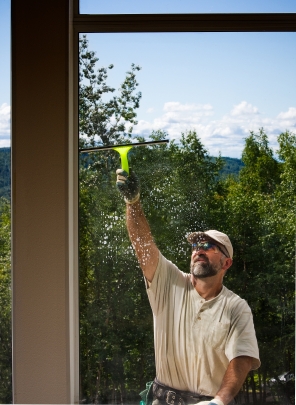













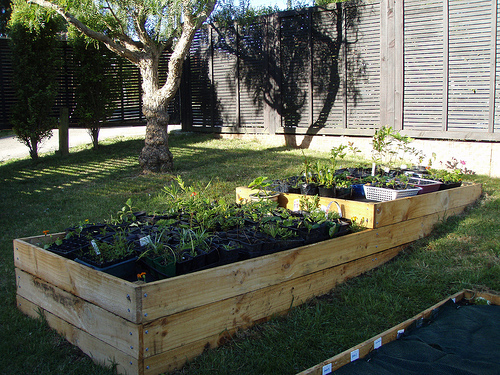
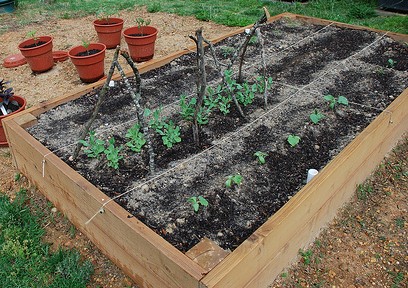

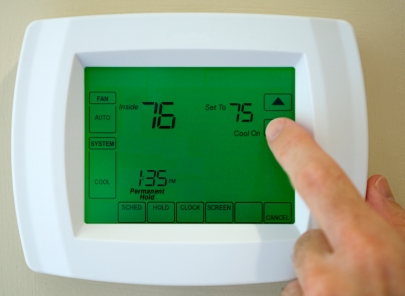
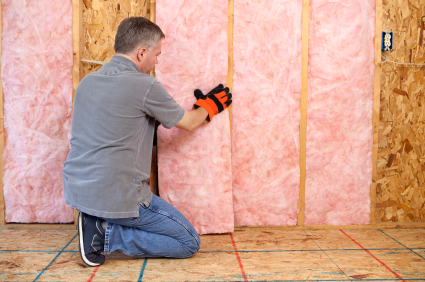
Комментариев нет:
Отправить комментарий